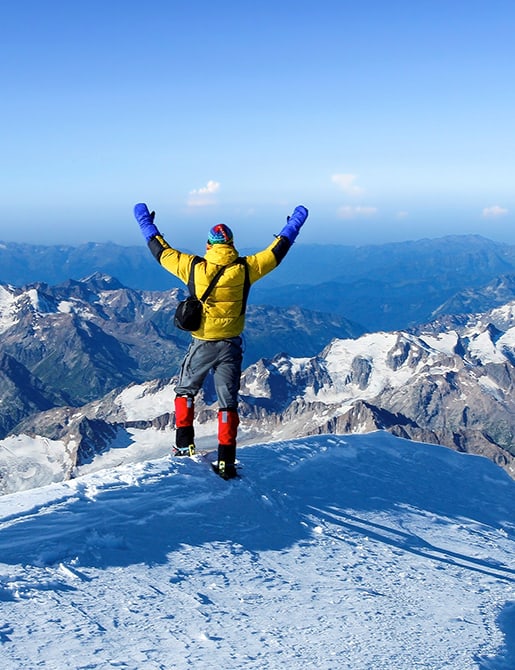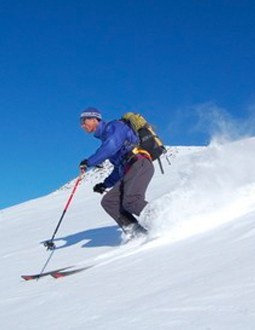
Monte Rosa is the second highest peak in the Alps at 15,292 feet. No other traverse in the Alps will let you summit as many 4,000 meter peaks in such a short time.
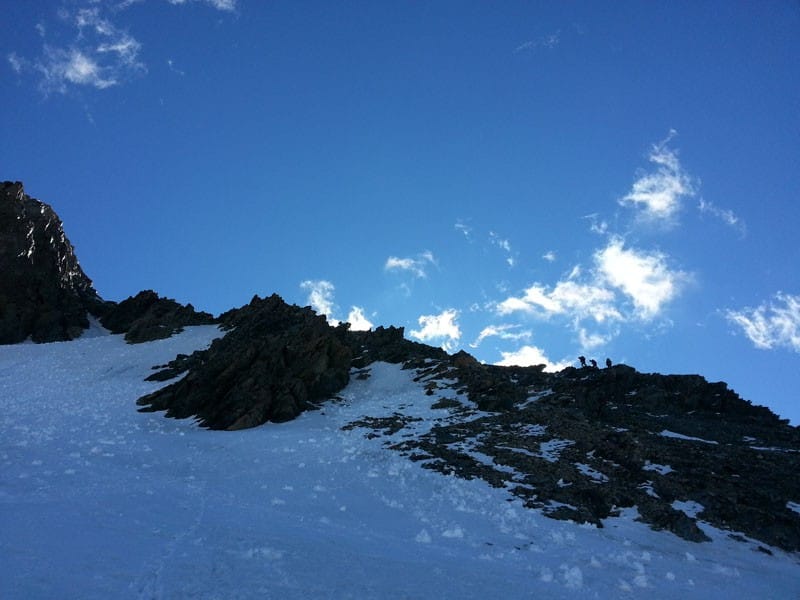

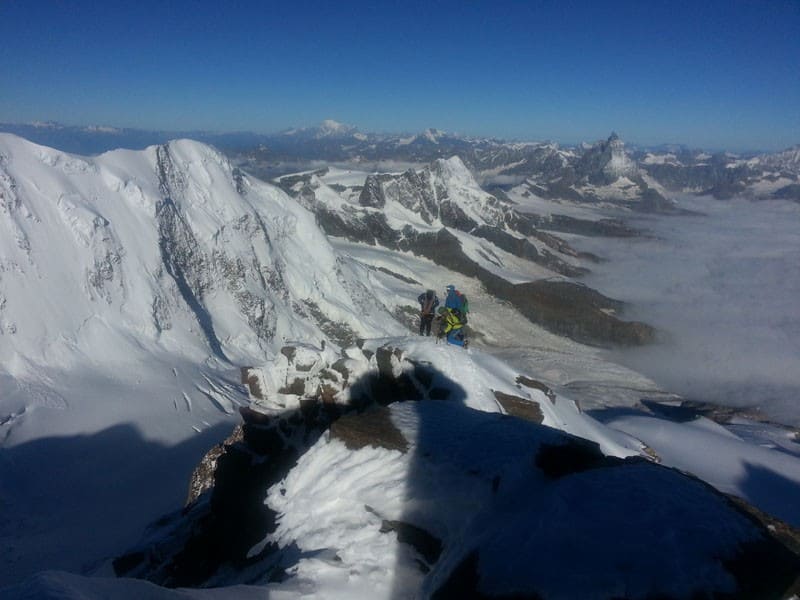

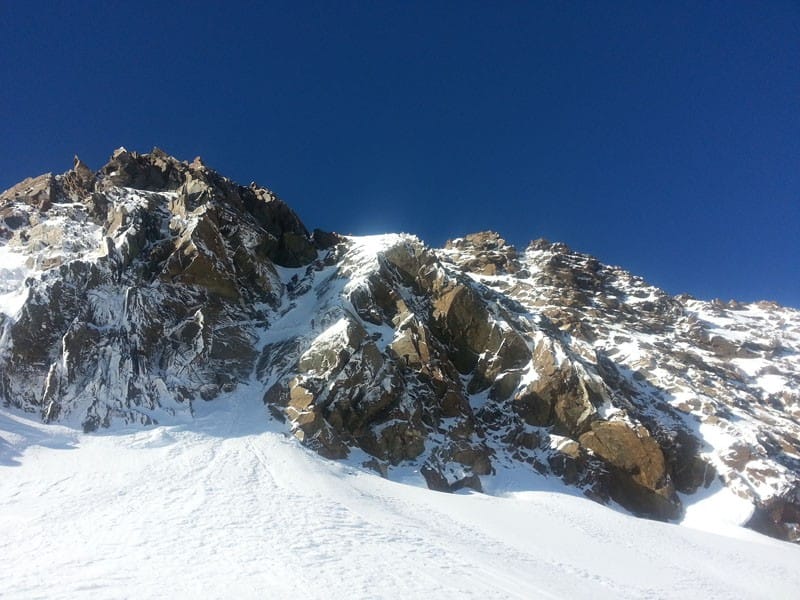

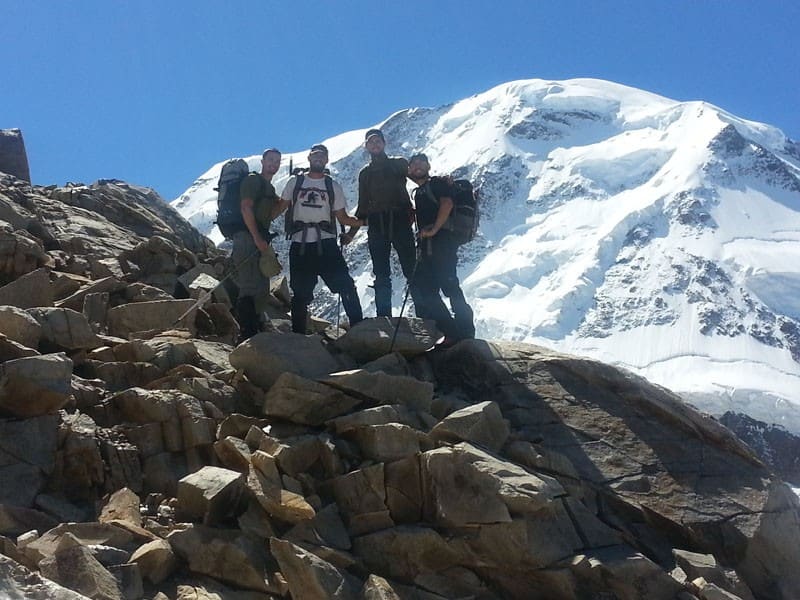


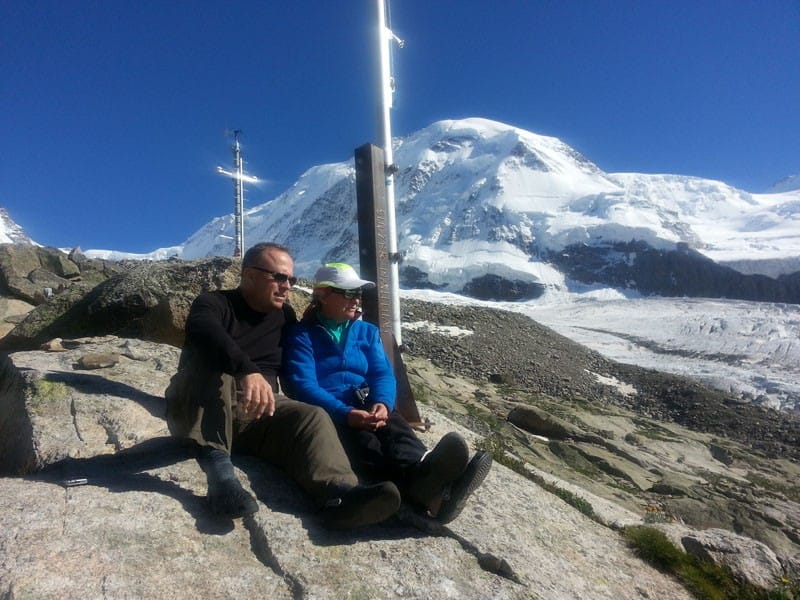


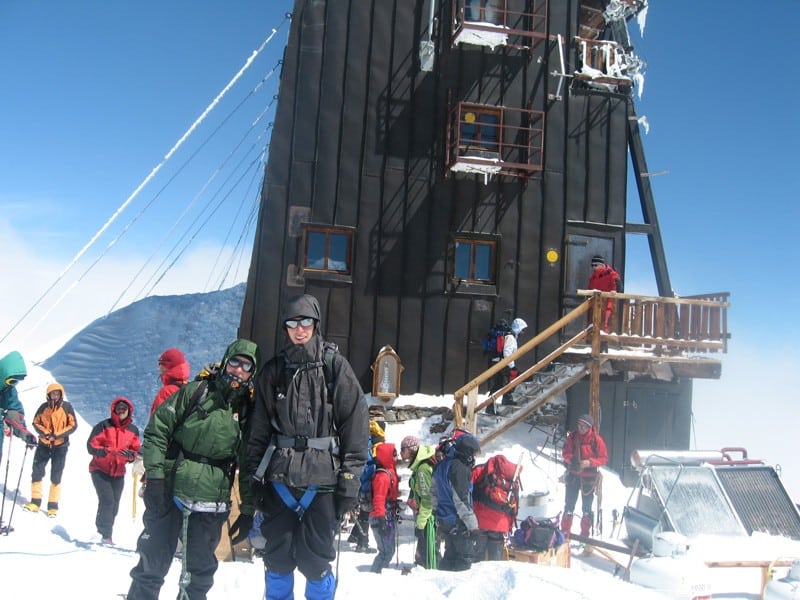
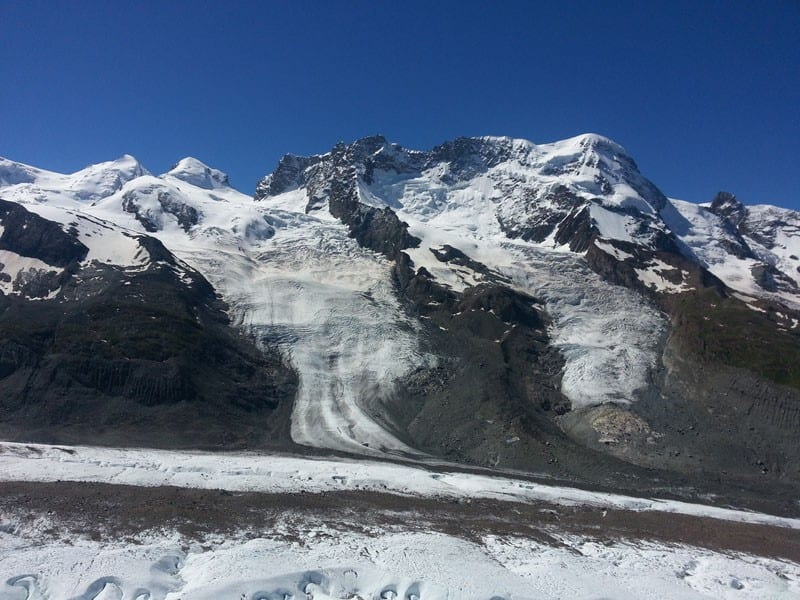
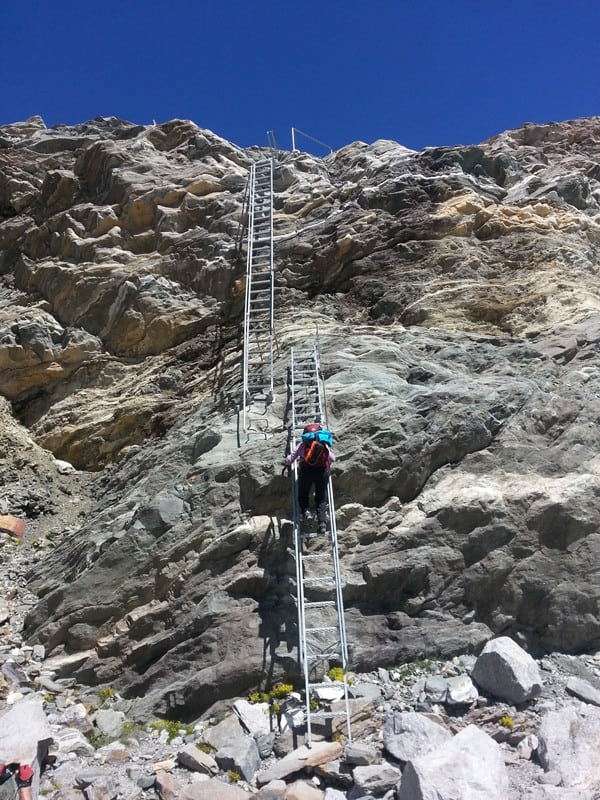

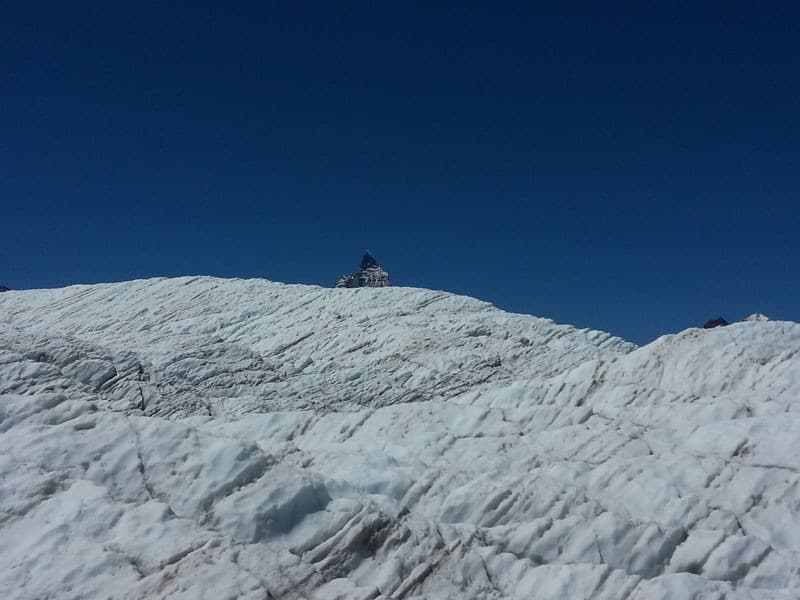
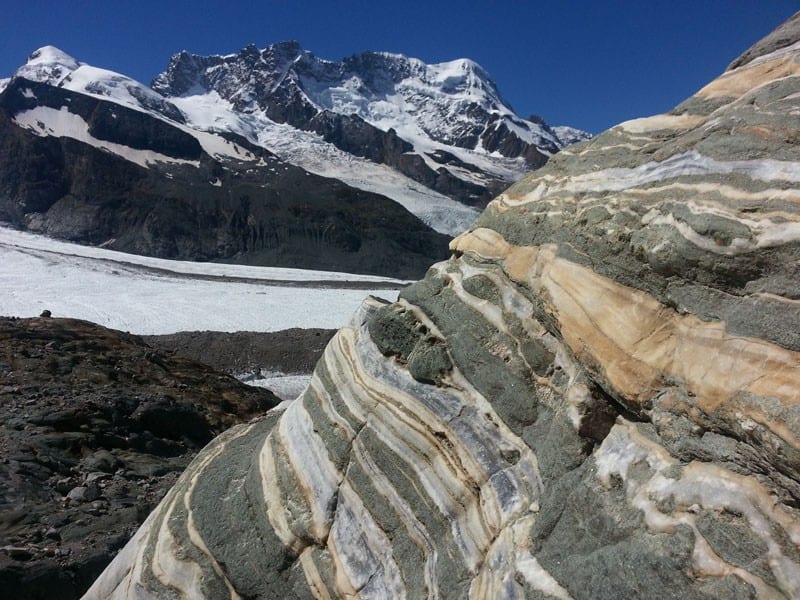






















Monte Rosa is the second highest peak in the Alps at 15,292 feet. No other traverse in the Alps will let you summit as many 4,000 meter peaks in such a short time -Breithorn, Pollux, Castor, Lyskamm, Balmenhorn, Signalkuppe, Zumsteinspitze, Dufourspitze. This spectacular week is not extremely technical, but strenuous and very exposed in parts. The general character of the traverse can be considered a mixture of the snowy Mont Blanc standard route and the seemingly endless fourth class terrain of the Matterhorn. We will be traveling on big glaciers, snow and rock ridges at altitudes between 12,000 and 15,500 feet, crossing the Swiss/Italian border a half dozen times. We'll sleep in the highest mountain hut in the Alps - Cabana Margarita, at 15,000 feet. We'll then traverse the spectacular summit ridges of the Dufourspitze before we return back down to Zermatt.
Please note the modified itinerary for 2026. The 2026 trip will not be a traverse, but will culminate in climbing Monte Rosa.
Overall difficulty: very difficult
Prior mountaineering experience required; One should have glacier travel experience, solid cramponing and rock climbing skills up to 5.6 YDS. Continuous movement in exposed terrain should not be a problem. Elementary rope handling skills such as tying in, rappelling and belaying are required.
Excellent physical fitness; you should be able to hike or climb for more than six hours with a pack varying from 20 to 40 pounds and ascend 4,000 to 5,000 feet of vertical gain per day for up to a week.
Modified Monte Rosa Week Itinerary (2026)
The afternoon before the trip starts, the group will arrive in Zermatt (and stay at the Hotel City).
Day 1: Climbing on the Riffelhorn (2700 to 2900 meters). Take the Gornergrat train up to Roten Boden. From there, we hike and scramble for about 20 minutes around to the south side of the Riffelhorn to the route entrance. The rock is solid and views of the Matterhorn and Breithorn North Face are outstanding. We have multiple choices of routes ranging in difficulty from 5.6 to 5.9 YDS. From the summit we scramble back down via the East Ridge and hike the short distance back to the train.
Day 2: After an early breakfast, we transfer to the neighboring Saas Valley. The ascent of the 4000 meter high Weissmies starts at 3000 meters at top station of the Hohsaas gondola. The ascent is technically easy, but the "usual high alpine hazards" like snow, ice and crevasses exist and you get to be up high and work on your cramponing skills. This is mostly a snow climb. After the summit we descend to the Weissmies Hut.
Day 3: From the Weissmies hut we can climb the Lagginhorn. With an elevation of 4010 meters, it is similar in altitude to the Weissmiess, but our starting elevation is a bit lower. The terrain is much rockier than on the Weissmies, so it will round out our training program for the ascent of Monte Rosa. We will transfer back to Zermatt that evening.
Day 4: The approach to the Monte Rosa hut at 2700 meters has become a little longer and a bit more involved than in years past due to glacial melt-off, but the walk from Roten Boden to the hut can still be considered a fairly casual affair.
Day 5: The ascent of the Dufourspitze (highest point of Monte Rosa at 4634 meters) is a big day. We are starting well before dawn up a block field to the Monte Rosa glacier and then the seemingly endless snowfield towards the final summit ridge. The sunrise at 4000 meters will make it all worth it. The final summit ridge from the "Satteltole" to the proper summit is never hard, but somewhat exposed. A truly unforgettable summit for sure. We will spend the night at the Monte Rosa hut again.
Typical Monte Rosa Traverse Itinerary
Day 1: We will start in Zermatt and conduct an equipment check prior to our ride on the gondola up to the Klein Matterhorn. From here we will climb the easy summit of the Breithorn (13,740 feet) and descend down to the Rifugio Guide Ayas (Italy, 11,220 feet).
Day 2: An early start gets us to the Schwarztor and then up the simple but steep West Flank of Castor (13,952 feet). The descent into the Felikjoch lets us see the massive ridge of the Liskamm for the first time. We descend down the Quintino Sella Hut (Italy, 11,830 feet).
Day 3: This is one of the biggest days of the trip. From the hut we climb back up to the Felikjoch and continue on the West Summit of the Liskamm (14,576 feet). From here we continue along the exposed “maneater ridge” to the Main Summit (14,939 feet). At this point we will have spent several hours at over 14,000 feet before we tackle the descent to the Gnifetti hut (Italy, 11,916 feet).
Day 4: With more peaks to bag, we climb up to the Lisjoch and on to the Parrotspitze (14,625 feet). We will have to make a quick descent to about 14,200 feet before we can tackle the endless cirque up to the spectacular Cabana Margarita (Italy, highest hut in the Alps, 15,028 feet).
Day 5: After a good night of sleep up high we head out to traverse the great Dufour Summit Ridge of the Monte Rosa (15,291 feet). The actual climbing on the ridge takes only a few hours, but is extremely spectacular and quite exposed. A simple descent down the Monte Rosa glacier brings us to the Monte Rosa hut (Switzerland, 9,223 feet).
Day 6: An early departure from the hut across the Gornergletscher will bring us to Zermatt by late morning.
Although tipping is not a requirement, it is considered standard practice in the guiding industry and is appreciated by our guides. We generally recommend roughly 10%-15% of your course or trip cost or a flat amount that you are comfortable with.
